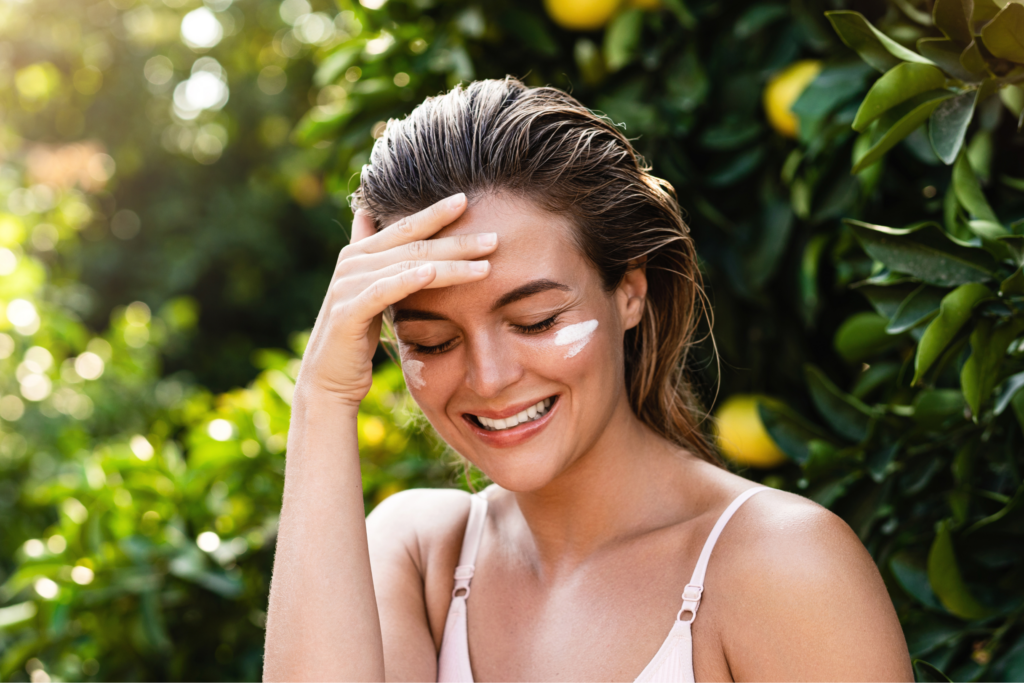Your business, your way – sell with Printify
Tired of the nine-to-five grind or looking to start an online business on a budget? Good news: today’s eCommerce tools make it easier than ever to sell products online – without inventory or upfront costs.
Let’s break down the top business models and show you how to launch – fast, simple, and risk-free.
Key takeaways
- There are several low-cost business models for selling online without inventory, including Print on Demand, dropshipping, affiliate stores, and digital products.
- Choosing a niche helps define your product offering, branding, and marketing strategy.
- Selling without inventory reduces startup costs and risk, but may involve trade-offs like less control over fulfillment and customer experience.
- A combination of SEO, content, email, and social media marketing helps attract and convert customers to your online store.
- Printify offers an easy setup for a no-inventory store with a wide product range, global Print Providers, and automated fulfillment.

“In early 2020, I ran several niche stores on Etsy and printed all the t-shirts myself. With Print on Demand, there’s no need to worry about printing, packaging, shipping, inventory management, or any other logistical tasks. Overall, Print on Demand was the obvious choice for me.”
Various business models for selling without inventory

Before you learn how to sell products without inventory, it’s important to choose the right eCommerce business model for your goals and resources.
Here are some of the most popular low-startup-cost options:
- Print on Demand
- Dropshipping
- Selling digital products or online services
- Affiliate stores
- Third-party logistics (3PL)
- Fulfillment by Amazon (FBA)
Each model supports running an online store without inventory, helping you reduce overhead and simplify business operations.
Let’s break down the basics of each one – along with key pros and cons – to help you find the best fit.
1. Print on Demand

Print on Demand (POD) lets you create and sell custom merchandise through a fulfillment partner – no need to manually handle inventory, production, or shipping.
Design your own hoodie, personalize candles, or create custom backpacks using a POD platform like Printify. When a customer orders, the Print Provider prints and ships it for you. Each item is made to order, so there’s no need to hold inventory.
Here’s how it works with Printify:
- Pick a product. Browse our Catalog of white-label products, from t-shirts and hoodies to wall art and home decor.
- Add your design. Use our Product Creator to upload your design or create something from scratch. Adjust sizing and placement, then add a product description and price.
- Create a listing. Pick a sales channel – whether it’s an online marketplace or eCommerce storefront – and connect Printify. Publish products to sync them with your store.
- Sell your product. When a customer purchases your print-on-demand product, our Print Providers handle the printing and shipping. You set the retail price, which covers production and shipping, and keep the profit.
Pros:
- No upfront investment
- Easily scalable
- Simple setup
- No inventory management
- Pay only for what you sell
- Use several manufacturers
- Product customization
Cons:
- Dependant on Print Provider quality
- Limited to catalog options
- Longer order fulfillment times
Make it happen today!
2. Dropshipping

Dropshipping lets you sell products from wholesale suppliers without holding inventory. When a customer places an order, your dropshipping partner ships it directly – no upfront costs, no storage required.
It’s a popular, low-risk way to break into eCommerce, but it’s also highly competitive. And unlike Print on Demand, you can’t customize products, and quality control can be inconsistent.
Pros:
- Wide product selection
- High growth potential
- Easy to set up
- Low startup costs
Cons:
- Highly competitive market
- May need to use multiple manufacturers
- Limited or no quality control
- Harder to build a brand
- Smaller profit margins
3. Selling digital products

Selling digital products is a great way to earn passive income – no inventory, no shipping. Depending on your niche, you might need digital design or editing software skills.
Here are a few profitable digital product ideas:
- Artwork and digital graphics
- Craft tutorials, like knitting or sewing patterns
- Photography editing presets
- Video, music, and audio media
- eBooks and guides
- Downloadable or web-based software
- Professional services or online courses
Establishing your own digital product business isn’t as time-consuming as it may seem. With the right tools, you can build an online store, market your work, and even create passive income streams.
Pros:
- No shipping logistics
- Fantastic sales potential
- Free creative approach
- Instant delivery to customers
- No inventory management
Cons:
- Relies on an existing skillset
- Per-sale profits may be lower depending on your niche
- Vulnerable to piracy
4. Affiliate programs
Running an affiliate store means earning money by promoting other businesses through affiliate programs. You’ll get a unique referral link, and every time someone buys through it, you earn a commission.
To start affiliate marketing, you’ll need a platform to share your links – like a blog, website, YouTube channel, or a strong social media presence.
Choose a niche that aligns with your audience, sign up for an affiliate program, and create content that highlights the value of the products or services you’re recommending.
Looking for a place to start? The Printify Affiliate Program offers a 5% commission on every order, with no cap on how much you can earn.
Pros:
- Increases your social media presence
- Earn revenue without handling business operations
- No upfront costs
Cons:
- Requires an existing online audience to get started
- Limited control over the affiliate store
- Commission rates and profits can vary by program
5. Third-party logistics (3PL)

Third-party logistics (3PL) lets you outsource inventory storage, packing, and shipping to specialized fulfillment companies.
Similar to dropshipping, 3PL providers handle the logistics and order fulfillment, but they don’t manufacture or fulfill products. You’ll still need to source inventory from a production partner.
This model is ideal for businesses that have products ready but lack the space, time, or resources to manage inventory and shipping themselves.
Pros:
- Potential cost savings
- Professional servicing
- Easier to scale operations
Cons:
- Less control over business operations and customer experience
- Finding a reliable, like-minded 3PL partner can be challenging
- Loss of potential in-house experience
6. Fulfillment by Amazon (FBA)
Fulfillment by Amazon (FBA) simplifies selling for independent merchants by handling storage, packaging, and shipping through Amazon’s global network of fulfillment centers.
It works like a 3PL, but with the added perks of Amazon’s brand trust and fast Prime shipping.
To get started, create a seller account, access Seller Central, and enroll in FBA. List your products, then ship them to Amazon following their inventory and packaging guidelines to enable automated fulfillment.
Pros:
- Trusted brand and quality customer service
- Ability to run promotions and offer discounts
- Added shipping location flexibility
Cons:
- Increased storage and fulfillment fees
- More returns possible
- Must meet product preparation and packaging requirements
Make it happen today!
How to sell online without inventory in 4 steps
To open an online store without managing physical inventory, all you need is a sales channel and products. Use an eCommerce platform like Shopify to build your own website, or start with an online marketplace like Etsy.
Choose one of the many ways to source and fulfill products from our list, define a clear niche, and develop a strategy to reach your target audience – and you’ll be well on your way to becoming a store owner.
1. Choose a niche and products to sell

A niche is a specific group of people with shared interests – think fancy cheese lovers, rodeo clown fans, or talking parrot owners. The more specific your niche, the better.
From there, decide whether you’ll offer physical products (through a print-on-demand platform or dropshipping supplier), digital goods, or promote other businesses through affiliate links.
Use tools like eRank and Google Trends for market research and rely on early customer feedback to shape your physical or digital products, messaging, and overall strategy.
2. Set up your eCommerce store
Use an eCommerce platform or an online marketplace to set up your storefront.
Online storefront platforms like WooCommerce or a Shopify store offer tools to set up an online website with a custom interface, plugins, and analytics and tracking features.
eCommerce marketplaces like eBay or Etsy are beginner-friendly thanks to their existing user base and website interface. However, you’ll only have control over your storefront and product listings.
Visit our blog to learn more about creating your first eCommerce store, including detailed information about Etsy shop ideas and Shopify store examples.
3. Market your online business
Marketing turns a great idea into a real business. For online entrepreneurs, a strong strategy is key to connecting with your target market and driving traffic to your online storefront.
Start with two core tactics: search engine optimization (SEO) and eCommerce marketing.
SEO helps your store get discovered in search engines. Use relevant keywords in your product descriptions and metadata to attract potential customers actively searching for similar products.
Then, enhance your reach with a mix of proven tactics:
- Content marketing builds trust and brings traffic through blog posts, tutorials, and visuals.
- Email marketing keeps your audience engaged with product updates, campaigns, and automated follow-ups. Find examples in our Shopify email marketing guide.
- Social media marketing helps you build a presence on social media platforms like Instagram, TikTok, and Pinterest. Here’s more on selling on social media.
- Influencer marketing puts your products in front of new audiences through trusted voices in your niche.
- Paid advertising targets shoppers directly on the platforms they use most.
These tools not only help you generate income, but also reduce the risks of losing money or facing lower profit margins – especially when you’re exploring how to start an online clothing store without inventory on a tight budget, where every marketing move counts.
4. Offer great customer service

If you want loyal customers and a trustworthy brand, great service isn’t optional – it’s essential.
Here’s how to create a customer experience that keeps people coming back:
- Set a clear, transparent return policy so buyers know what to expect.
- Follow up after purchases – thank your customers and let them know you’re available for any questions.
- Encourage reviews and feedback to build trust and improve your store.
- Keep your audience engaged with regular updates, sales, and fresh content.
- Create a positive, responsive environment that fosters loyalty and word-of-mouth.
Solid service turns first-time buyers into lifelong customers.
Pros and cons of selling online without inventory
Here’s a quick breakdown of the pros and cons to help you decide if this model fits your products and business goals.
| Advantages | Disadvantages |
|---|---|
| Saves money on storage costs | Harder to ensure consistent product quality |
| Streamlines fulfillment by outsourcing shipping | Low barrier to entry means higher competition |
| Keeps initial setup costs low | Limited options for what to sell |
| Can be done entirely online with a small team | Less control over delivery times and fulfillment sources |
| Frees up time for market analysis | Returns and refunds can be trickier to handle |
How to open an online store without inventory using Printify

Start selling print-on-demand products online with Printify. No inventory, no upfront costs, and no hassle.
Take your best design ideas and turn them into unique branded merchandise in five simple steps.
1. Join Printify
Create a free Printify account and access all the tools and resources to start an online store without inventory.
2. Create your products
Go to the Product Catalog and browse our 1,300 print-on-demand products. Add your designs using Printify’s easy-to-use Product Creator and hit Save once you’re done.
3. Order samples
Go to the product page on your Printify account dashboard to order a sample product. Follow expected delivery times and check the product quality to ensure it meets your standards.
4. Connect your own online store
Use any of Printify’s eCommerce integrations to connect your sales channel. We offer integrations with many popular eCommerce platforms and marketplaces like Shopify, Etsy, eBay, and WooCommerce.
5. Publish and start selling
Set a price, add a title and description, and publish your new product. Once a customer orders from your online store, we’ll print and ship it right to their doorstep.
FAQ: How to start an online store without inventory
Yes – several business models let you sell without managing your own inventory.
- Print on Demand – You create designs, and a Print Provider handles printing, shipping, and fulfillment.
- Dropshipping – You list products from a supplier who ships directly to your customer.
- Affiliate stores – You promote products using tracked links and earn a commission per sale.
- Third-party logistics (3PL) or Fulfillment by Amazon (FBA) – You outsource storage and eCommerce fulfillment to a partner.
These models let you start selling without importing products, buying in bulk, or handling warehousing.
Start by choosing an automated eCommerce business model, such as Print on Demand. Then, select a niche market, build your storefront, and connect with a fulfillment provider to source products. From there, optimize your store for search engines, and use tools like email marketing to message buyers and promote your store – all without ever handling the inventory yourself.
Choose a free model like Print on Demand or dropshipping. These methods let you launch without upfront expenses, making them ideal if you’re exploring how to start an online boutique without inventory or just want to test your ideas with zero risk.
There’s no one-size-fits-all answer, but a broader range of products gives your store a better chance to attract attention and generate sales, as long as the amount doesn’t overwhelm.
Start with a few trending product choices and expand as you see results.
A print-on-demand setup makes it easy to experiment with multiple designs and launch products quickly, without worrying about unsold stock tied to inventory.
Why start selling online with Printify?
Partnering with Printify is a simple, cost-effective way to launch a business without managing your own inventory. Gain access to a vast range of products and top Print Providers worldwide, with no minimum orders and fully automated fulfillment.
Bring your custom designs to market – quickly and effortlessly – with Printify.












